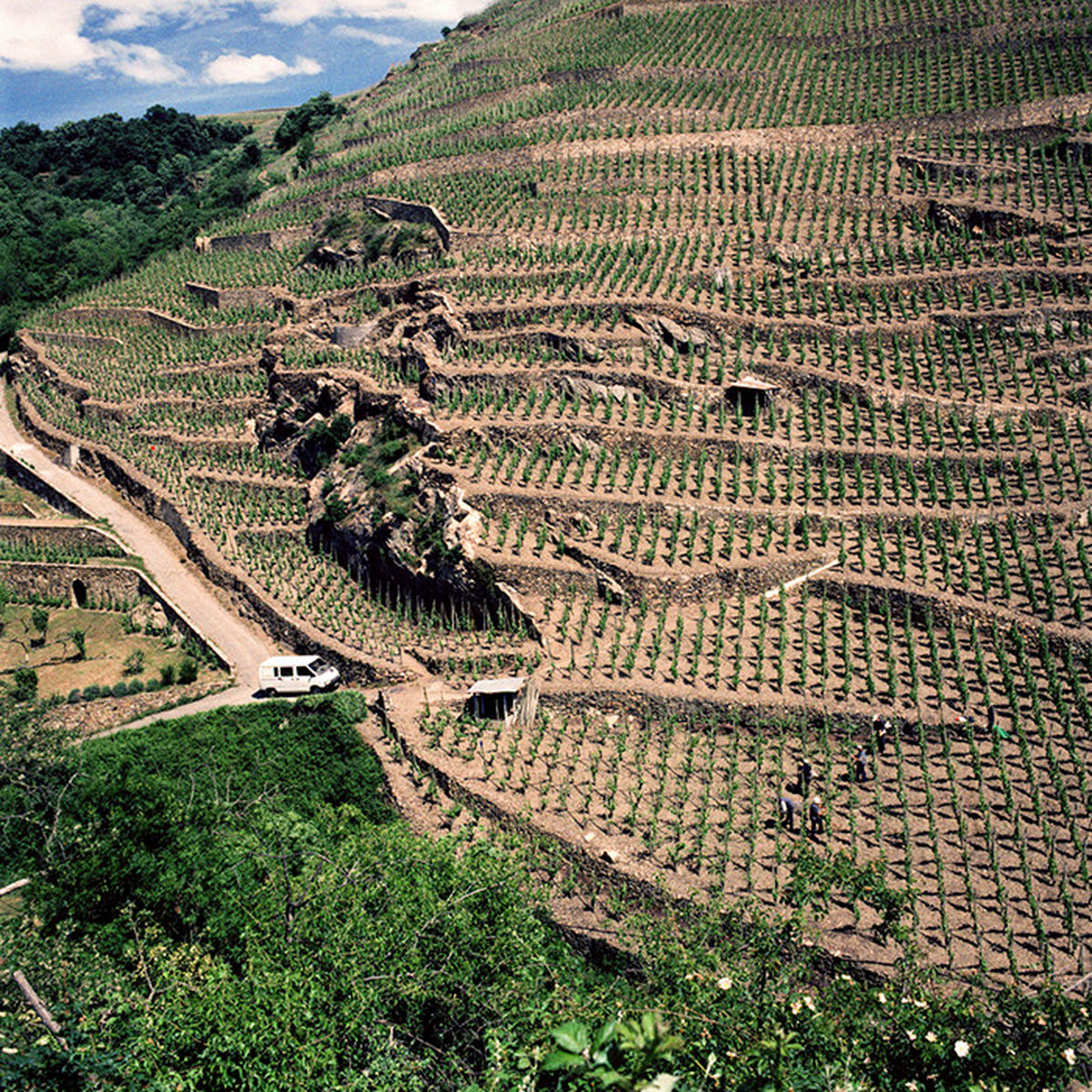A collector’s guide to the Rhône
Author: Alexandra Gray de Walden

Despite climatic challenges, the Rhône’s talented winemakers continue to produce excellent fine wines here. But where should one start? Here, Alexandra Gray de Walden finds out.
In terms of collecting wine, the Rhône has previously languished in the shadows of regions like Bordeaux and Burgundy. As the Rhône’s wines are (honestly) able to give “the two Bs” a run for their money, it’s high time we all made some room for Rhône in our cellars.
I put this to our Wine Director, Mark Pardoe MW, ahead of our Rhône 2022 En Primeur offer. Why should enthusiasts start collecting Rhône?
Because it is a region for every collector, regardless of palate or budget, says Mark. “The Northern Rhône and Southern Rhône are distinctively different propositions. They should really be seen as two different regions, due to their fascinating diversity.”
The Rhône has diverse flavours and styles from its many permitted grape varieties. The diversity of its terroir – from granite and schist in the north to clay, sand and galets (pebbles) in the south – gives the wines a true taste of time and place.
King in the north
The Northern Rhône appellations of Hermitage and Côte-Rôtie are perhaps the most well known. Hermitage reds are dominated by Syrah and are rich, deep and immensely age-worthy. The white wines are made with Marsanne, often blended with Roussanne, producing aromatic, nutty wines which age wonderfully.
Emmanuel Darnaud has vineyard parcels across Hermitage. Each one is picked and vinified separately, allowing their individual characteristics to shine. The 2022 is the first vintage of his red Hermitage with its delightful pomegranate and elderberry flavours.
Wines from Côte-Rôtie are lighter in style with more florality to the nose and palate. Again, the red wines are made from Syrah but up to 20% of the white Viognier grape can be added for freshness and floral characters.
Stéphane Ogier is considered a master of the Syrah grape, having honed his viticultural skills in Burgundy. His Côte-Rôtie Mon Village is his ode to this hallowed slope with blackcurrant, plum and vanilla notes.
“The volumes for Côte-Rôtie and, especially, Hermitage are tiny” Mark tells me. “The wines are distinctive and strongly allied to their terroir – the definition of collectible.”
Southern charm
The Southern Rhône – perhaps even the entire Rhône Valley – is best known for Châteauneuf-du-Pape. This historic appellation takes its name (“The Pope’s new castle”) from Pope Clement V, who relocated the papacy to nearby Avignon in 1309. This one part of the Southern Rhône produces more wine than the entire Northern Rhône.
Fourteen grape varieties are permitted in Châteauneuf-du-Pape, offering winemakers innumerable blending options. The GSM (Grenache, Syrah and Mourvèdre) blend is very popular with its mix of pepper, red fruit and black olive flavours.
Domaine des Saumades is a lesser-known gem in Châteauneuf-du-Pape, owned and run by Franck and Murielle Mousset. The Châteauneuf-du-Pape Blanc here is a refreshingly unctuous bundle of flavour complexity.
The other big hitting region of the Southern Rhône is Gigondas, which tells a similar tale according to Mark. “The best wines here are age-worthy, complex and definitely affordable”. They are fleshy and robust with that twist of Rhône pepper. They can be a maximum of 80 percent Grenache with at least 15 percent Syrah and/or Mourvèdre. The balance can then be comprised of any variety authorised for Côtes du Rhône (except Carignan).
La Bastide St Vincent dates from the 17th century and has 26 hectares of vines – all the famous Rhône trio of Grenache, Syrah and Mourvèdre. Its Gigondas brims with dark cherry and spiced currant flavours and is a noteworthy introduction to the region’s wines.
“The Rhône is eminently collectible, but prices haven’t spiralled,” Mark concludes. This is a defining point for what makes its wines such a treasure for collectors. There is immense quality and superb winemaking talent in the region, all for affordable prices. “Although climate change is raising challenges [like the tornado in Châteauneuf-du-Pape in 2023], the wines have probably never been better and certainly never more consistent”.
Find out more about our Rhône 2022 En Primeur offer here.


